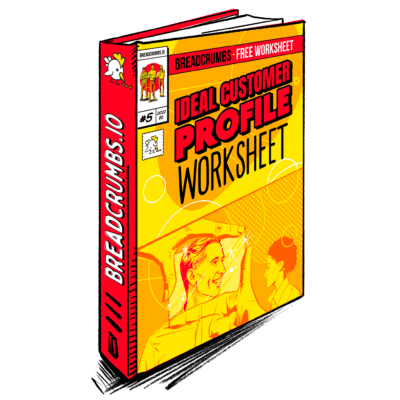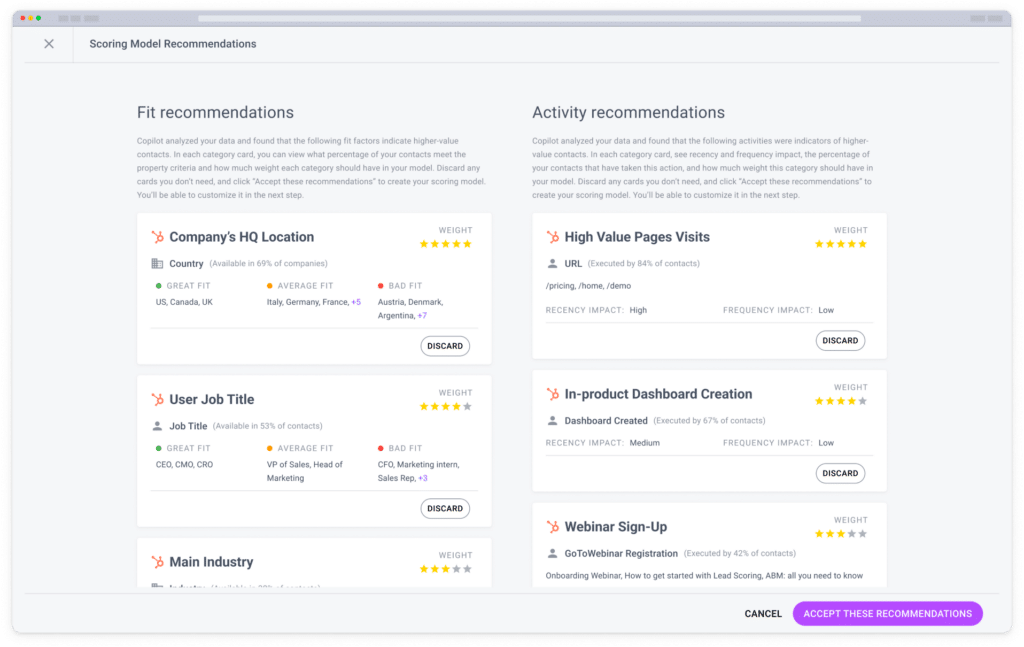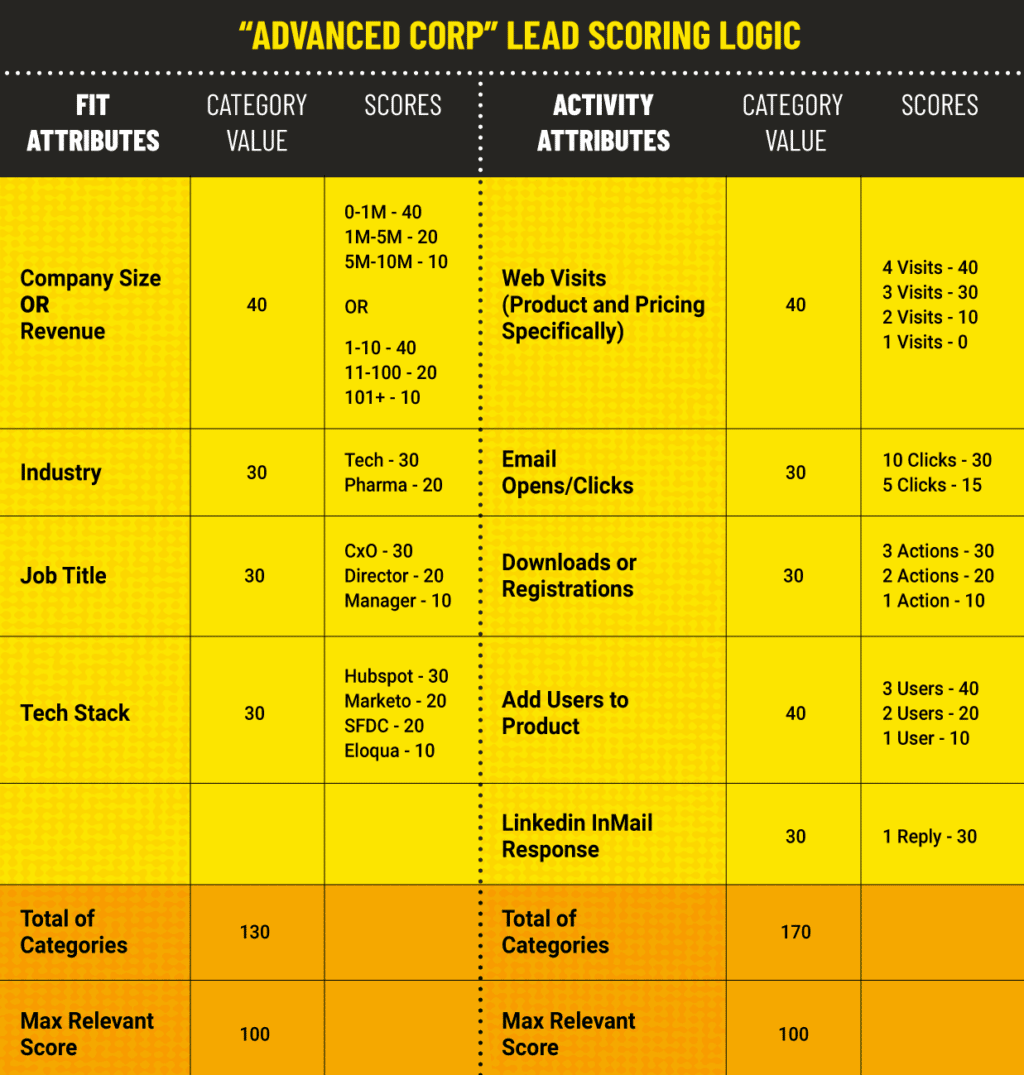The world of B2B marketing has always been active. The industry is constantly in flux, continually growing toward the next significant advancement. By remaining focused on the present, B2B marketers limit their ability to gauge the market properly.
Here’s the deal…
The wants and needs of your potential customers are constantly shifting. That’s why it’s crucial to understand how the industry has changed over the years to where it is now. Otherwise, you’ll never be able to predict where it’ll go accurately.
Staying ahead of shifting demographics and trends is essential when creating your effective B2B marketing strategy. Without this proactive measure, you may find yourself behind your largest competitors, playing catch-up when you could be commanding the industry.
Luckily, we’re here to help.
In this article, we’re focusing on how the B2B marketing industry has changed over the years. We’re also placing a special focus on the introduction of automation, AI, and lead-scoring solutions like Breadcrumbs.
PS: Want to jump ahead and bring the power of enhanced lead scoring to your business? Click here to book a Breadcrumbs demo!
Introduction to B2B Marketing Evolution
B2B marketing first came to prominence in the 1800s, when business-to-business entities would list their services and products in trade journals or catalogs.
Then came the days of traveling sales assistants and cold calling, effective in their own time. Email marketing also became prominent in the 90s, with businesses taking full advantage of this new communication platform.
Eventually, that evolved into social media content personalization, with B2B companies targeting potential customers and clients through professional networks like LinkedIn.
However, as the industry shifted and the decades rolled on, these sales calls became more common. Businesses needed to find ways to reach more motivated buyers faster.
That’s when data became a major factor in creating a B2B marketing strategy.
In short, we can learn more about our customers by gathering data on our audience. That includes what they want and don’t want and what communication channels are most effective in reaching them.

Ebook
Ideal Customer Profile (ICP) Worksheet
Learn how to create an Ideal Customer Profile and build a successful sales strategy with this Ideal Customer Profile (ICP) Worksheet.
Recent news: The latest and greatest advancements to hit B2B marketing have been automation and artificial intelligence platforms.
Gone are the days when marketers had to analyze large sets of data and perform repetitive tasks manually.
With the advent of automation platforms like Redbird, marketers can now easily automate and unify their analytics work in minutes without writing a single line of code. This not only saves time but also enhances the efficiency of marketing campaigns.
Redbird acts as an analytics operating system, enabling users to build reusable automation workflows throughout the entire analytics lifecycle. This means marketers can seamlessly collaborate with their team members, readily sharing their automated workflows and boosting productivity. With this approach, the possibilities are boundless.
Imagine the efficiency gains, the collaborative power, and the deeper insights into your B2B marketing endeavors!
These technological marvels allow you to automate repetitive tasks and successfully predict upcoming market trends. We can use platforms like Breadcrumbs Copilot to assign lead scores to individual consumers and determine outreach strategies and priorities.
Let’s take a closer look at automation and AI.
The Role of Automation And AI in B2B Marketing
Automation and AI work together to improve the efficiency of B2B marketing initiatives. Here are a few ways we see these advancements helping B2B marketing plans daily.
A more efficient workforce
Automation platforms can help create a more efficient workforce that’s more responsive and proactive.
Repetitive tasks can be a huge time suck for B2B organizations. If a SaaS marketing team spends too much time on email outreach or social media marketing, they’re not selling.
Of course, these are tasks that someone still needs to do. And that’s where automation and AI come into play.
Customer communication
AI-powered customer service can work through a chatbot that responds to customer inquiries online. Through machine learning, these bots can come to understand your customers better. Eventually, they’ll learn how to converse with them productively about your B2B products.
In other words, AI can handle some of your simpler or more common customer queries. That frees up human support and marketing agents to field more advanced customer questions that require direct communication.
Automated prospecting
Automated prospecting has revolutionized the way companies identify and engage potential clients. Marketers can efficiently scale their outreach efforts by utilizing tools to automate LinkedIn prospecting, ensuring they connect with the most relevant professionals and decision-makers.
This not only streamlines the lead generation process but also significantly enhances the precision and effectiveness of marketing campaigns.
Predictive analysis
AI can examine sales trends over time and create predictive analysis. That analysis can show you what to expect in the future from your B2B customers. It can also help B2B marketing teams make better B2B marketing plans based on trends revealed through actual data.
Customer segmentation
AI and automation platforms can help B2B businesses segment their B2B buyers. This segmentation allows for more efficient marketing as different strategies and campaigns can be used for different segments.
While this used to be something marketers did on their own, automation and AI can segment audiences instantly. These platforms can then personalize content for these segments, even addressing individual leads by their first names.
Why does this matter?
Plain and simple: Personalization is pivotal to building trust with target audiences.
In email consultancy, marketing professionals leverage automation and AI to help clients create hyper-tailored campaigns for their segmented audiences. For instance, instead of merely blasting generic emails to a vast audience, email consultants use AI to understand the needs of individual recipients.
Based on this, automated systems curate and dispatch relevant content tailored to those specific needs. It’s a blend of technology and strategy, guaranteeing that email communication is relevant, timely, and compelling.
Marketing professionals also tailor lead nurturing campaigns to complement the customer journey, nudging prospects down the funnel.
Data-driven insights and personalization
B2B marketing has evolved through automation and AI to make solid use of data. It’s also easier than ever to gather that data.
Automation platforms track your customer outreach, detailing tactics that work and don’t. That information is then cycled back into the lead scoring model to predict success accurately.
Again, one of the keys to marketing success is using data-driven insights to personalize the marketing process. That means presenting individual customers with information that interests them specifically and communicating that message to them in the manner they prefer.
All of this can happen through lead scoring and customer segmentation. If one segment of your audience converts more through Google Ads, you can leverage that information to market to them more effectively. But this personalization is only possible through data-driven insights.
The interplay between AI, dating, and changing relationship dynamics
While B2B marketing might seem worlds apart from personal relationships, examining the growing impact of AI on dating apps offers a fascinating perspective on how consumers today engage with technology and how businesses can learn from these evolving dynamics.
According to a recent article on CNN, AI is significantly transforming the dating industry. More and more dating apps are integrating AI into their platforms to improve user experience, ranging from better matchmaking algorithms to chatbots guiding users through the dating process. This isn’t merely a technological advancement but a paradigm shift in how people find and establish connections.
And where does this impact reflect most? The evolving marriage statistics. According to recent statistics on marriage, young individuals, who are more inclined to use AI-driven platforms, are increasingly finding love online. The fusion of technology and relationships has changed how individuals meet, communicate, and eventually commit.
Enhancing marketing efficiency
As B2B marketing technology and tactics evolved, more thought was put into increasing the efficiency of marketing and sales staff.
The goal? Getting the most out of every workday.
This concept is at play when marketing teams invest in productivity tools like time-tracking apps and full-time equivalent (FTE).
This software tracks employee work hours and autogenerates actionable reports for management. A paycheck stub generator can be essential for managing employee records. This digital timesheet also helps facilitate the payroll process.
Then, you have marketing admin activities that require a lot of time and attention.
These tasks include creating customer profiles, logging calls, and posting on social media platforms at the best times.
Embracing automation with free social media schedulers lightens the load on marketing teams so they can focus on other sales-oriented tasks.
Thanks to automation and AI, B2B marketing companies have saved a ton of time and money by tracking the time spent on tasks and having many simple tasks automated. This tactic guarantees B2B marketing and sales team members are putting effort where it’s most needed.
Case studies
When trying to gauge the effectiveness of these tactics, we can turn to real case studies that show the impact that lead scoring and automation have had.
Take this case study for the company Thinkific. It desperately needed to improve its Speed to Lead time, as it was, seeing a lot of inconsistencies and falling well below industry standards.
It used Breadcrumbs Reveal to identify its ideal customer profile. From there, it was simple to focus on specific metrics that contributed to its success. The company then used Breadcrumbs to create a lead-scoring model and improved its SLA by 99%.
Check out additional case studies on how automation and lead scoring can help you improve your sales process through data-driven action.
Lead scoring
One of the largest advancements AI and machine learning have brought to B2B marketing is lead scoring. It’s so vital to B2B success that it deserves its section below.
Understanding Lead Scoring
Lead scoring is a unique process that uses machine learning to gauge a prospective customer’s interest and urgency.
This process assigns a numerical score to all incoming leads, showing their likelihood of conversion and the urgency behind their search. This process uses data analytics and predictive modeling to examine a customer’s needs to find the best opportunities for a positive purchase decision.
Lead scoring platforms like Breadcrumbs allow B2B marketers to prioritize sales outreach accordingly. With lead scoring platforms, you can feed the strongest opportunities without wasting time on cold leads with a low chance of conversion.
Leveraging Automation and AI for Lead Scoring
Lead scoring isn’t new, but automation and AI have made it a far more efficient process. At one time, lead scoring was done manually by marketers. While this could still be effective, it often fell victim to human error.
Marketers could miss or misinterpret a vital piece of data, or an unconscious bias might lead to overlooking opportunities entirely.
Breadcrumbs takes a unique approach to lead scoring. The platform uses machine learning to gather and assess data. It then puts human marketing professionals in the driver’s seat to make decisions based on this data.
In other words, you get the efficiency of machine-compiled data but with a human marketing expert’s creativity and improvisational brainpower. The result is a far more efficient B2B sales process.
For instance, with our Copilot, B2B companies can connect lead and customer data platforms and use insights on the company’s success metrics to develop a lead scoring model.
Let’s dig into personalization a bit further.
The future of B2B marketing
As B2B marketing efforts continue evolving into the near future, we expect to see a few trends continuing. These include:
- A continued investment in AI to bring machine learning and unrivaled efficiency into the sales process
- A focus on developing an omnichannel sales experience
- Intent-based marketing, where businesses target people who have shown a specific interest in their company first
- Continued enhanced personalization of the B2B sales cycle at every stage
- A focus on account-based marketing
- A continued focus on creating solid lead-scoring models
By considering these trends when forming your next B2B marketing plan, you can give yourself a head start and plan growth goals with the future in mind.
Conclusion
Understanding how the B2B marketing world has evolved helps us more accurately predict where it will go.
Keep the insights listed above in mind when forming your next B2B marketing plan, and you’ll create a more effective and efficient sales system.
For more information on using Breadcrumbs to create the best possible lead scoring model, click here.







